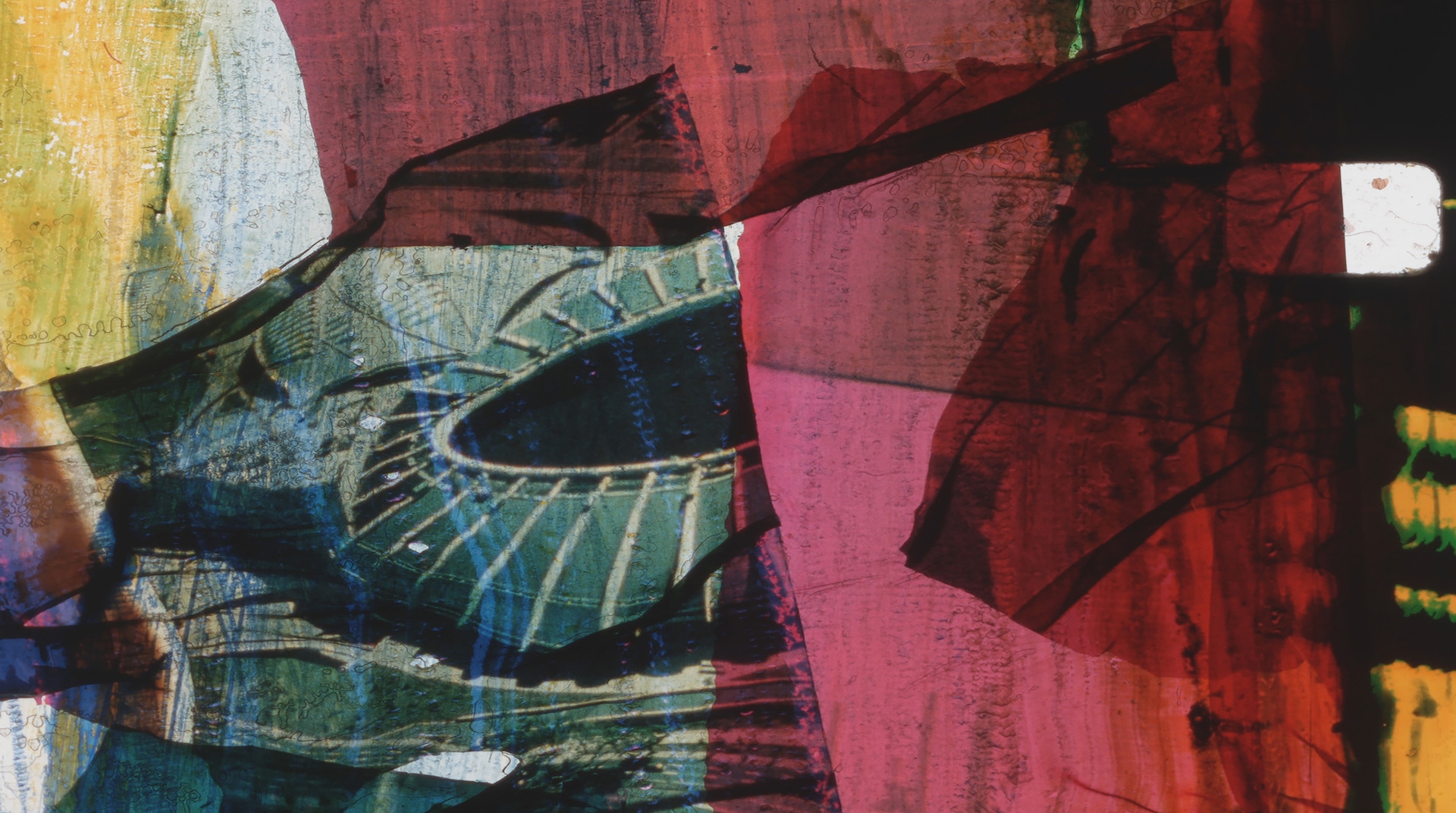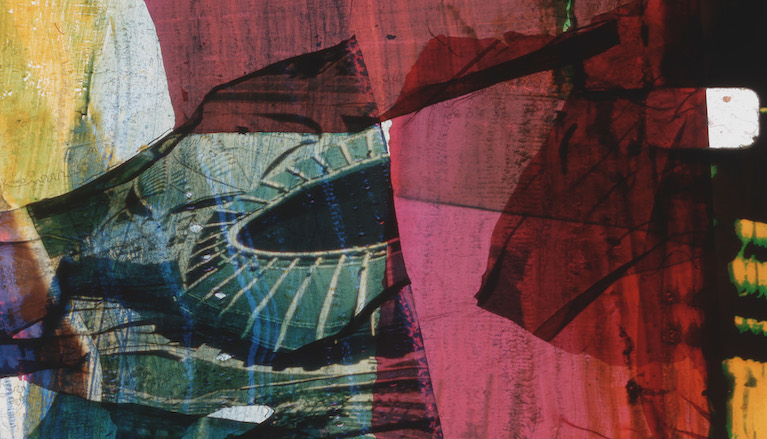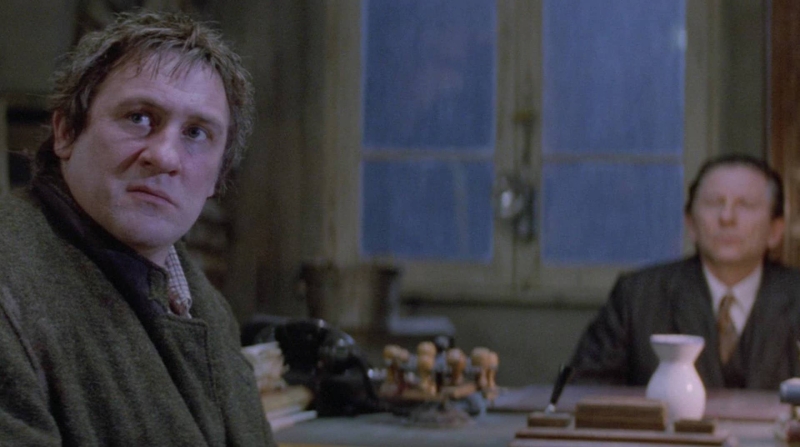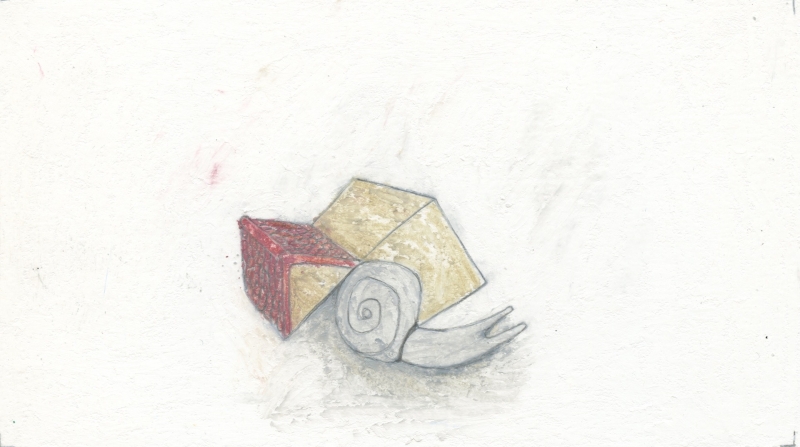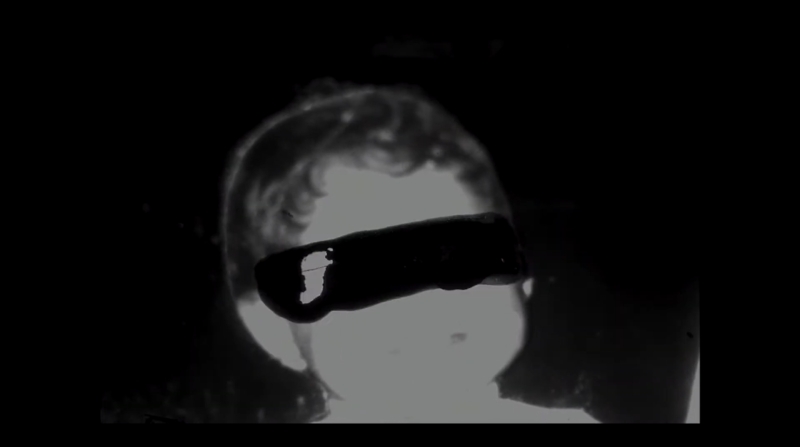Inaugurazione ore 19.00
La video-opera è fruibile tutti i giorni da mercoledì 21 giugno con orario 17:00 - 20:00
Programma a cura di Fulvio Baglivi, Mauro Santini, Roberto Turigliatto

spazio bianco continues its investigation into Italian cinema of research (a continuation of the experience of the Satellite section) by proposing two paths that show how analogue and digital contribute to the creation of new forms of storytelling and aesthetics as well as ethics in the work of Federica Foglia and Erik Negro. The double show will be completed and expanded on RAI 3 Fuori Orario - Cose (mai) viste in the night of Friday, June 23, with films by and interviews with the filmmakers.
Can I use the film strip structure as an architectural element?
Is it possible to use the celluloid from the film as concrete?
Can these skyscrapers be turned into something else?
Can solid lines blend into sensual, natural curves?
Can I melt skyscrapers?
Skyscraper Film was created to try and give a visual answer to these questions, arising from the artist’s relation to urban maps of various cities and their respective skylines, which are populated by imposing skyscrapers and reinforced-concrete panoramas: Quebec, Kingston (Canada), Maryland, Pittsburgh, Baltimore (USA), etc. Cities are presented to us as an abstract, handmade, camera-less collage, created from scraps of orphan 16mm films from the 1980s. Originally produced to promote tourism in North America, these films are reassigned to a new context through the Emulsion Lifting/Emulsion Grafting technique that the director has been pursuing for years. In addition to tourism films and informational films, Skyscraper Film also uses rare family films and home-movies dating back to 1929 in 16mm format.
Federica Foglia is a transnational visual artist working between Italy and Canada. After graduating in History of Art, Theatre, and Film at Naples University ‘Orientale,’ she moved to Toronto to continue her studies and obtained a Master of Fine Arts at York University, where she is currently completing a PhD in Cinema & Media. She is interested in issues involving migration, identity, women of the diaspora, temporality, in search of an aesthetic language to express them. Her practice fits into the context of materialistic experimental cinema with a particular inclination towards tactile, recycled, camera-less cinema. Throughout her career she has collaborated with artists such as filmmaker Deepa Mehta (Water), filmmaker and activist John Greyson (Lilies), and experimental filmmaker Philip Hoffman (What These Ashes Wanted). She is currently working on a project that involves the development of analogue and eco-sustainable emulsion-lifting techniques with 16mm orphan films from private collections and family archives. Her works have been exhibited, screened, and awarded in a great number of international venues.
After leaving Italy to embark on my overseas journey of film research, I asked myself how could I create films that fully recount my migratory experience? I tried to produce linear, narrative movies, filming the reality around me in Canada with my first Bolex. But, looking at the footage, I realized that my images had not captured the truthfulness of my new nation. What I had filmed, and what I was feeling, were like two completely different languages. I was experiencing a surreality consisting of overlapping fragments. Fragments. Everything appeared fragmented, disconnected. The images of my now distant family album crumbled against the concrete images of this new city. Only an abstract and non-linear cinema could authentically represent what I felt. I wanted to bring a visceral experience to the screen that made the viewer feel, more than understand, what I was experiencing now that I was separated from Italy and decontextualized in another country. A cinema that tried to speak to the subconscious, not telling a story but, in its stead, communicating a feeling. Migrant feeling. Non-narrative fragments, out of context, like misplaced syllables. These are the elements that I decided to use to represent myself. My reluctance to use the original footage that I had shot pushed me towards images shot by others, that could speak to me about this new country. Observe them, ingest them, digest them, absorb them, and rework them. I began by infiltrating the images of canonical Canadian archives and then moved towards private family archives and noninstitutionalized sub-archives. It was at this very moment that I believe I caught an incurable archive fever. By immersing myself in these archival artifacts, I came into contact for the first time with 16mm analogue films, a living and tangible material in my hands, reels of films that kept me company during the lockdown and ushered my creative practice toward an analogue turn. For years now I have adopted this materialist methodology, which leads me to work directly on the surface of these recycled films, film waste destined for oblivion. So-called orphan films. Orphaned because they have now lost all ties to their original creator. Films that due to force majeure find themselves wandering the world without a fixed home. They pass from hand to hand until they arrive in my hands. I collect and work with this type of wandering scraps because I too feel a bit like this, looking for a home. I try to place them back on the screen from which they have been temporarily excluded. Films on the margins which I restore to a privileged position. I look at the archive as a space of collaboration which is in constant movement. Not a static, dogmatic, inaccessible archive but a fluid archive. An archive in which the past and the present co-exist in a non-linear, circular, a-temporal, and omni-directional temporality. The past and the future on a continuous loop, passing into the future and returning from the past in a constant circle, where new meaning is born from the archived and de-archived images.
The hope is to return to the artist, and to the citizen, the right to actively collaborate in the historical archiving process, a process usually supervised by closeted state institutions. A participatory archive, in which the citizen is actively asked to collaborate in the process of historical writing and rewriting. I work from home in an artisanal and intimate way; by doing so, I can establish a direct relationship with the images and with the material; material that eventually becomes a co-creator, no matter how much my hands want to manipulate it, it all depends on the material and how it will respond. I try to limit my impact on the environment, preferring a recycling aesthetic for an eco-sustainable cinema. I question myself about my role and try to liberate myself from the anthropocentric concept which sees man as the ultimate creator. Instead, I attempt to have a metabolic relationship with natural elements that I use as my artistic collaborators: water, soil, yeasts, moulds, sugars, fire, wind, plants, algae, organic material. The verb to capture is often used to describe filmmakers and their camera eye. Dziga Vertov’s film Man With a Movie Camera is an exemplary masterpiece of the concept of capturing the world through the camera. I align with the camera-less cinema idea of being a Woman Without a Movie Camera, preferring a hybrid approach, somewhere between animation, sculpture, painting, and cinema, which lacks the supporting element of the lens – of the eye that captures the surrounding world. If the camera captures images, the movie without a camera returns them. It is a cinema that aims at a gesture of reconciliation with the images of our shared history and collective memory.
I often use a technique that borders between painting, sculpture and animation. It was born as emulsion lifting, a hand lifting of the photographic emulsion, of the gelatin from the film base, which is then re-positioned onto another base. But the term, emulsion lifting, lacks something. Yes, the process does involve the lifting of the gelatin emulsion from the original film base, but afterwards the lifted emulsion is grafted onto a new film base to become a new image. It is more like botanical grafting that lifting. I renamed my personal process “emulsion grafting”, which incorporates both the lifting /cutting act, as well as the final step of gluing the image on to another base, a piece of clear polyester. Thus, we witness the creation of new images, formed by fragments initially not belonging to the same film, joining to become one. Grafts that will give life to a new variety of plant. Grafts of photographic emulsion onto a polyester base. Just like my life, made up of fragments of various cultures, places, languages, which I’m trying to fit together on a single support. For me, the archive becomes a vital means for this rewriting process. A rewriting of myself, through these gifts: the images of others.
Mauro Santini
Federica Foglia’s artistic production is situated at the crossroads between figurative arts, animation, and autobiographical experimental cinema. Hers can be defined as a tactile aesthetic. Her works are in fact created by hand through inter-digitation between the skin of the artist and the skin of the film, the actual celluloid: a symbiotic exchange between two parts that affect each other. Her cinema is inscribed in the tradition of direct-on-film animation, in the wake of artists like Stan Brakhage, Man Ray, and Cécile Fontaine. After her first digital experiments that nod in the direction of post-internet art, with glitches and autobiographical fragments inserted in an interactive web portal, more recently her research has moved towards a manual, sculptural, and pictorial approach. This process takes the artist from the technological-immaterial to the analogue-material. Through found footage, Foglia remediates old 8mm and 16mm films to create a personal autobiography. In her first analogue experiments, Foglia altered layers of photographic emulsion through chemical agents producing a series of layered and veiled images. An ecological reflection on the environmental impact of her cinema led the artist to abandon this technique to work on films made without the aid of chemical agents: photograms become ‘phytograms,’ artefacts created by placing leaves and flowers in direct contact with the film surface, exposed to direct sunlight to create photographic impressions.
The Pesaro exhibition (the first solo exhibition dedicated to the young artist) is focused on three of her films made using variations of another technique, emulsion lifting. Currents / Perpendicolare Avanti (2021) is a moving-image collage, a kind of painting on film, using a wet emulsion lifting technique. In the wet and fluid form of this technique, the colours used are indeed the fragments of celluloid, displaced by hand and re-assembled on another 16mm polyester base. Skyscraper Film (2023) is a reflection on the North American urban landscape. The artist uses a dry variant of the same technique: emulsion fragments are lifted and displaced from the 16mm polyester base, and no longer processed in their gelatinous liquid form, but in a solid dry form. Self-Portrait in Hell (2021), the only 8mm film, is created via celluloid decomposition techniques: the film is buried in soil to allow bacteria to eat the emulsion, highlighting the ephemeral materiality of organic celluloid. Furthermore, the analogue technique converses with digital alterations.
World premiere Film Positivo / Negativo (2023) completes the spazio bianco exhibition: contamination between film emulsion and organic materials, a female body that is first fragmented and then melted with insects, plants, and butterflies until it becomes one with nature.
ALL SCREENINGS ARE FREE
